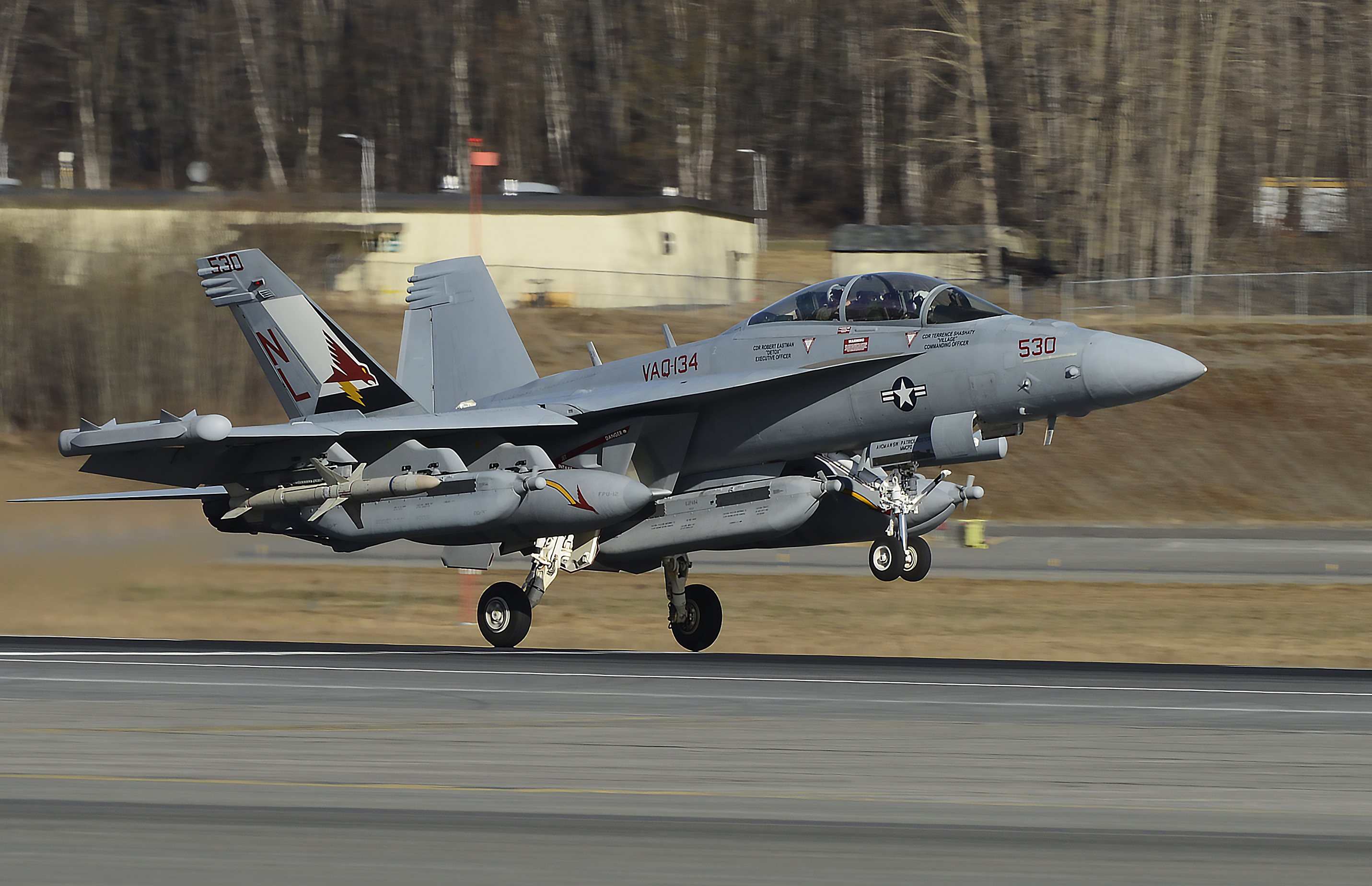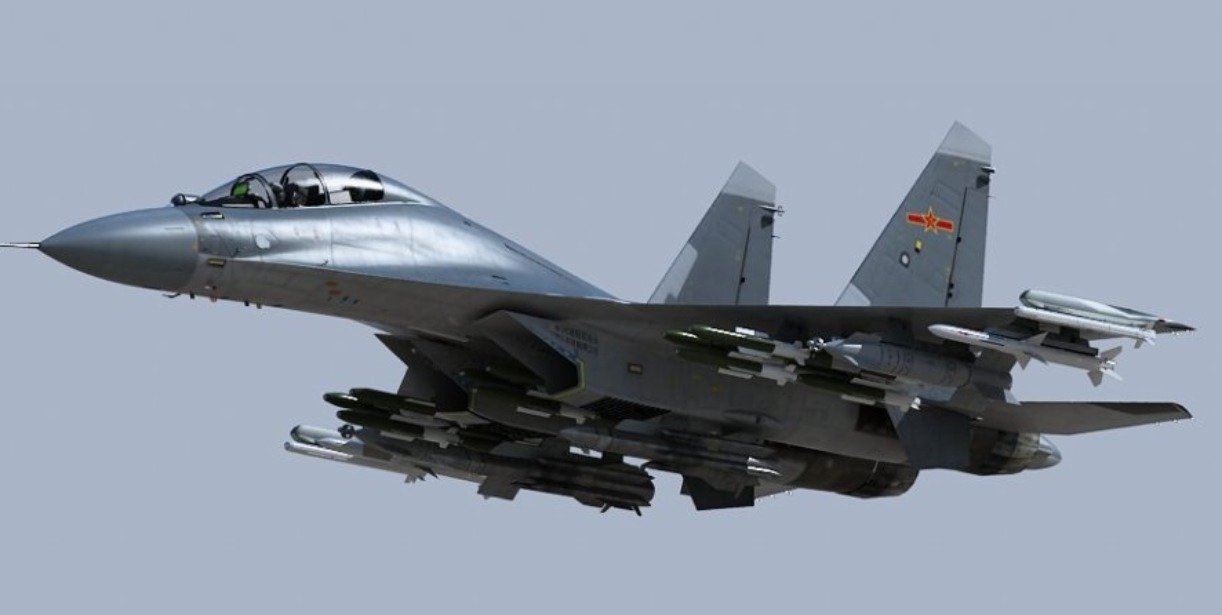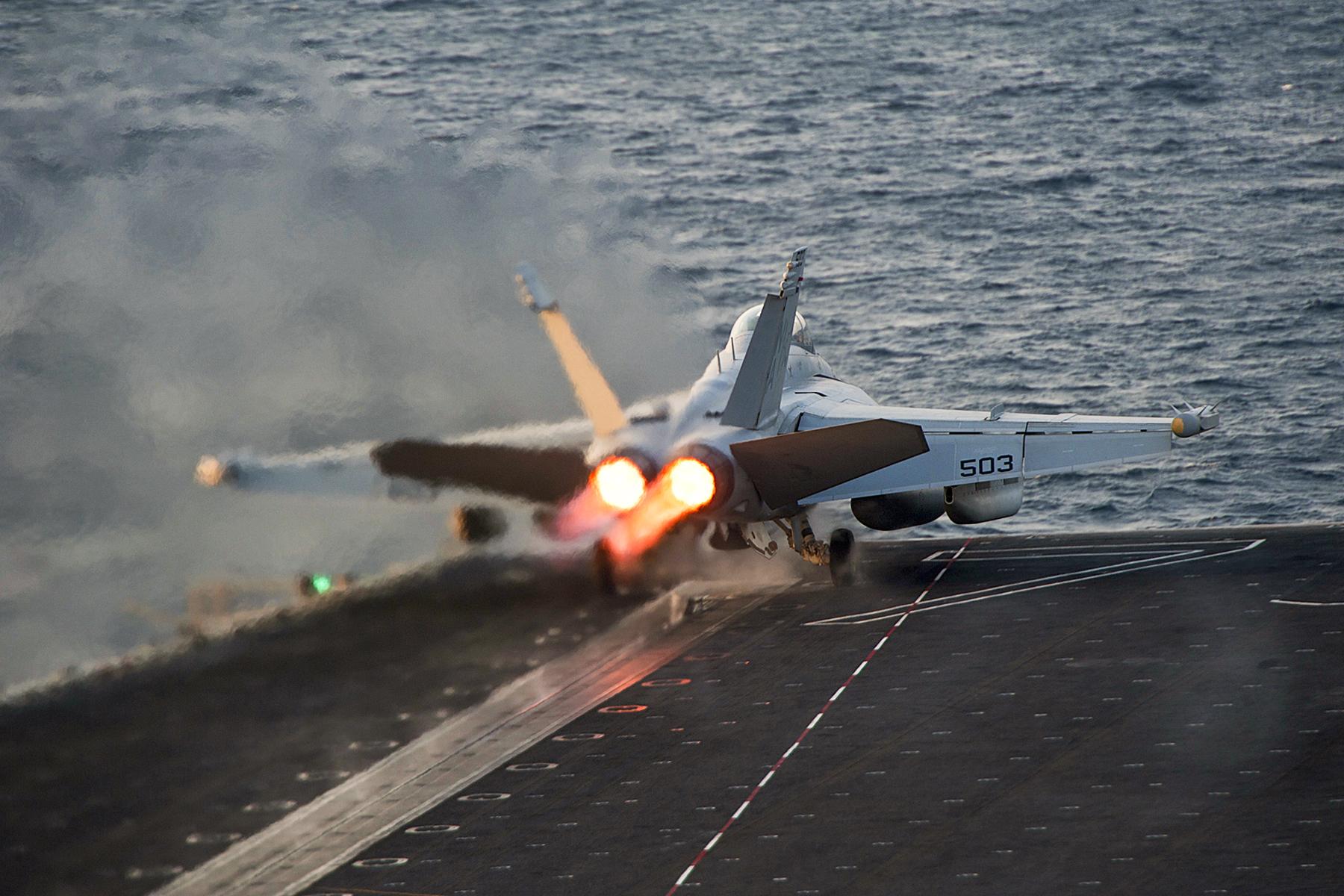While China has bolstered its electronic warfare (EW) capabilities in recent years, the United States is eyeing a different trajectory with its plan to retire the EA-18G Growlers, a potent EW aircraft.
China Dumps Russian Ka-28 For New ‘Submarine-Hunter’ Helicopter; Aims To Check US Naval Activity In SCS
The US Navy has recently revealed its intention to decommission all non-carrier-based five Growler squadrons, totaling 25 aircraft. This represents almost a third of the department’s tactical jet electronic attack force.
The decision was disclosed in the document of the Department of the Navy budget for the fiscal year 2023. These five squadrons are known as Expeditionary Electronic Attack Squadrons or Expeditionary VAQs.
The service wants to deactivate its whole expeditionary VAQ (electronic attack squadron), which is responsible for supporting US Air Force and Navy shore-based missions.
This comes at a time when China is beefing up its electronic assault capacity, with two J-16D aircraft, the electronic-warfare variant of the J-16 multirole strike fighter, making their maiden appearance in a group that flew into Taiwan’s air defense zone in January.
The J-16D is regarded as one of the most modern warplanes of the People’s Liberation Army and its ability to tamper with the enemy’s defense radar systems could make the difference between victory and defeat in battle. This Chinese EW plane is frequently compared to America’s EA-18G Growler electronic attack fighter.
Mission 2025 – After Blasting Satellites, China Says Will Now ‘Track & Attack’ Asteroids Headed Towards Earth
Furthermore, given China’s growing capabilities, the US Navy’s decision to reduce its Growler fleet has perplexed aviation enthusiasts and defense experts.
Following the retirement of the United States Air Force’s EF-111 Ravens in the mid-1990s, the expeditionary EW mission was transferred to the Navy and Marine Corps, which used the EA-6B Prowler. The Prowler has now been retired by both forces, with the last Marine EA-6B squadron closing operations in 2019.

Since then, the Navy has been the primary supplier of this electronic warfare aircraft to the United States military, and it has been constantly working to modernize the Growler. The service announced the new contract update last year to upgrade sensor hardware and software for the EA-18G.
US ‘Hits Back’ At China With Air-Breathing Missile; Sets A Deadline To Field Its Hypersonic ‘HALO’ Weapon
According to the SEAPOWER website (official publications of the United States Navy League), the five squadrons have a total of 25 EA-18G Growlers that will be stored at Davis-Monthan Air Force Base in Tucson, Arizona. Half of the jets will be withdrawn in the fiscal year 2024, and the other half in the fiscal year 2025.

The five expeditionary VAQ squadrons are all based at Naval Air Station Whidbey Island, Washington: VAQs 131, 132, 134, 135, and 138. They were frequently assigned to Asia and Europe to support the US military and its allies.
For instance, following Russia’s invasion of Ukraine, six Growlers from VAQ-134 were dispatched to Spangdahlem Air Base in Germany in March 2022 to reinforce NATO’s air presence.
Navy Capt. Christopher M. Bahner, who serves as commander of Electronic Attack Wing Pacific, said: “Expeditionary EA-18G squadrons integrate with joint and coalition forces to provide our commander’s capabilities to defend our forces in all potential phases of operation, while allowing our Carrier Air Wing EA-18G squadrons to remain at sea, defending the freedom of navigation with our carrier strike group teams.”
The capabilities of this aircraft are demonstrated by the fact that military officials continue to regard it as a critical component of their long-term plans.
The aircraft carrier USS Carl Vinson (CVN-70) carried two extra EA-18G Growlers during its first deployment in the Indo-Pacific, raising the carrier’s Growler fleet to seven, compared to the usual five on most deployments, as previously reported by the EurAsian Times.
Future Plans For Growler
This type of jet is designed to undertake electronic warfare missions that use jamming sensors to confound enemy radars, “greatly assisting in the suppression of hostile air defense activities.”
The decision to send 25 of these highly potent jets to the vault puzzled many, especially because the Growler fleet will grow even more powerful with the addition of Next Generation Jammer pods.
These pods will be used in place of the ALQ-99 tactical jamming pod system, which requires a lot of upkeep. These new pods outperform previous models in terms of performance.
Aside from the new jamming pods, the Navy’s EA-18Gs are slated to become even sharper thanks to a Block 2 upgrade program. This will include enhanced “cognitive electronic warfare” capabilities that will leverage artificial intelligence (AI) and machine learning technologies, among other things.

The Navy’s 161-strong EA-18Gs fleet is reasonably new, despite its current and anticipated future capabilities. The jets have only flown 2,465 flight hours on average out of a total service life of 7,500 hours, which can be stretched further if necessary.
In addition, the US Air Force is also seeking to resurrect its small fleet of Compass Call electronic warfare planes, which are mostly used to disrupt communications.
Its new EC-37 platform, which is based on Gulf stream, will outpace the C-130s it will replace. It’s also conceivable that it’ll be more powerful than its predecessor against radars and other air defense systems.
- Contact the author at ashishmichel@gmail.com
- Follow EurAsian Times on Google News




